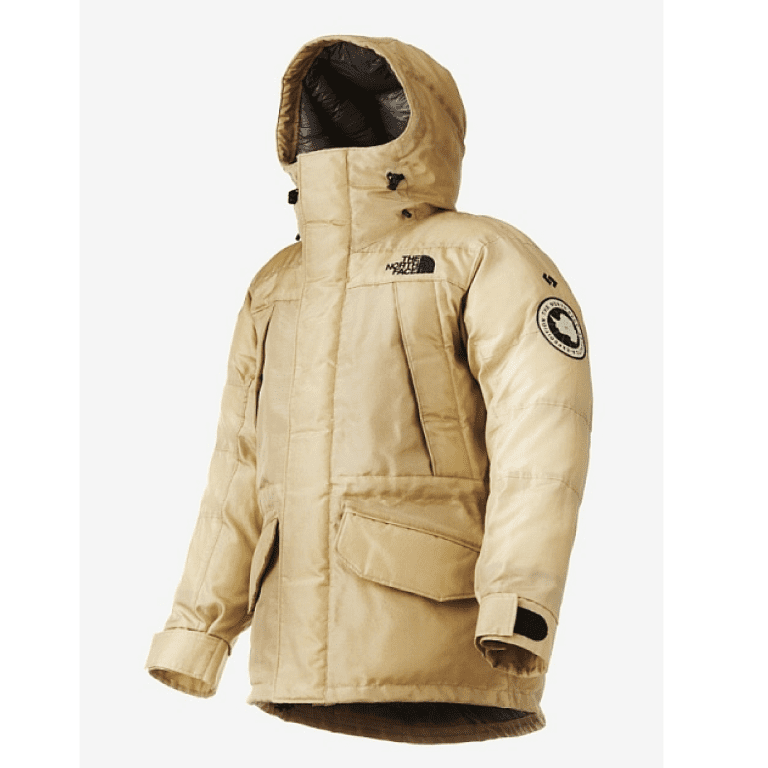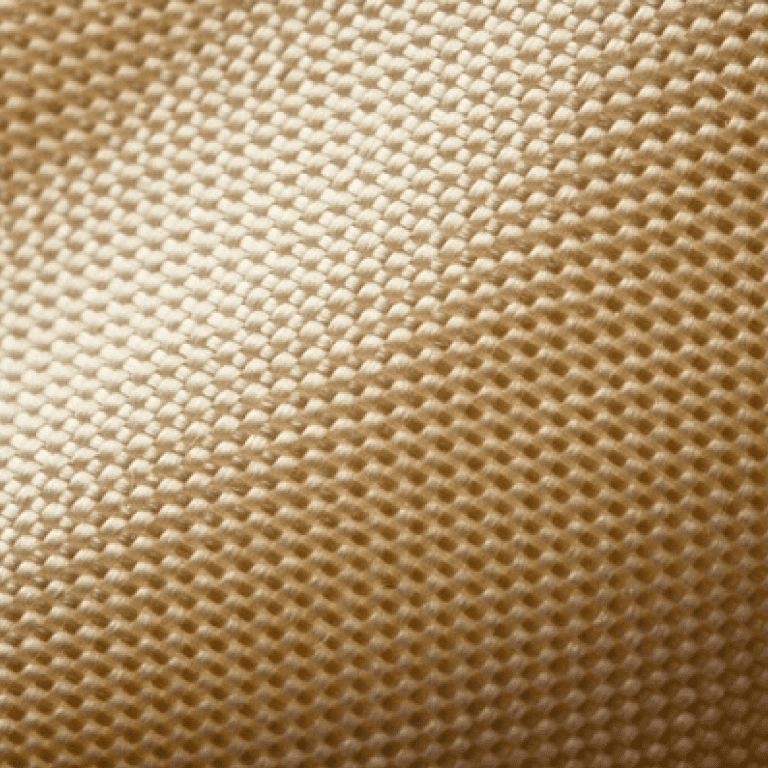TRABAJO EN CONJUNTO
En 2015, Spiber and Goldwin desarrollaron en conjunto un proyecto de investigación referido al trabajo sobre la aplicación de materiales de proteína de próxima generación. El exitoso prototipo de la Moon Parka está basado en la mejor indumentaria para exterior de la línea Antártica de The North Face. Este logro, marca el primer uso exitoso de tela de araña sintética en una verdadera línea de manufacturas, un gran salto en lo que se refiere al dominio del poder de los materiales basados en proteínas de próxima generación.
Con un diseño inspirado por la indumentaria Antartica, el material externo de la Moon Parka está hecho de “Moon Gold” QMONS(™)-el material de tela de araña sintética)- con QMONOS(™) black usado para bordar los logos. Durante el proceso de creación del prototipo, eligieron tipos de proteínas de su librería que fueran mejores para la generación de material para uso de exteriores y para hilos de bordado, luego de intentos extensivos para encontrar los hilos perfectos para la los menesteres del proceso de cosido.
DESARROLLO DEL PROTOTIPO
La Moon Parka es la la primera pieza del mundo hecha de un marial a base de proteína artificial , y el el proceso de creación del prototipo, por parte de Spiber y Goldwin les brindó una gran posibilidad de adentrarse en los retos que se seguirá enfrentando en el camino a la producción en masa. en miras de resolver estos problem,as y traer a la Moon Parka al mercado lo más posible, Spiber ha colocado un total de 9.58416 billones de yenes de las ganancias compartidas que contribuirán a resolver los desafíos que enfrentarán, y a través de la investigación colaborativa y el desarrollo con la idea de traer a la Moon Parka a los usuarios a partir de este año.
En la actualidad, la mayor cantidad de las prendas deportivas se realizan en materiales a base de polímeros sintéticos ( como el polyester, nylon,etc) que requieren petróleo para producir, por otra parte su producción consume grandes cantidades de energía y gases invernaderos. con las reservas decrecientes de combustibles fósiles, la responsabilidad de cambiar de las energías no renovables a las fuentes renovables descansa en la sociedad de hoy.
A través de este trabajo en conjunto, el plan de Spiber y goldwin es reducir el consumo de recursos no renovables y la emisión de gases invernaderos tanto como sea posible, encontrando un balance entre los humanos y la naturaleza. Promoviendo. indumentaria para actividades al aire libre que hace uso de materiales biodegradables como este, hermosos y sustentables materiales , este emprendimiento entiende que puede alcanzar un impacto sin precedentes en la humanidad.
The first step toward practical application of protein materials.
Spiber, which has received support from the New Energy, Industrial Technology Development Organization (NEDO), as well as the Ministry of Economy, Trade, and Industry (METI), has been selected for participation in several national projects (※1). GOLDWIN markets The North Face, a leading outdoor apparel brand in Japan. Together, Spiber and GOLDWIN are pleased to announce MOON PARKA, a new and exciting prototype developed as a joint research project for release by the North Face in 2016. The MOON PARKA signals the beginning of a new paradigm in sports apparel, combining the brand strength of The North Face with Spiber’s QMONOS(TM), the world’s first successfully-produced synthetic spider silk material. The moon is the most remote and extreme environment upon which man has set foot, and the MOON PARKA expresses the strong determination and spirit needed to explore locations even more extreme than the Antarctic, as well as the limitless possibilities this project holds.
In 2015, Spiber and Goldwin together launched a joint research project working toward the practical application of next-generation protein materials. The Moon Parka’s successful prototyping is based on The North Face’s top-of-the-line Antarctica Parka outerwear jacket. This achievement marks the world’s first successful use of synthetic spider silk materials on an actual manufacturing line, a giant leap toward fully harnessing the power of next-generation protein materials.
With a design inspired by the Antarctica Parka, the Moon Parka’s outer material is made from “Moon Gold” QMONOS(TM), with black QMONOS(TM) used for the embroidered logos. During the prototyping process, we chose the protein types in our library that are best suited to crafting the outer material and embroidery thread, then conducted extensive trials to find the perfect threads for the spinning, twisting, weaving, and sewing processes.
The Moon Parka is the world’s first piece of clothing made from artificial protein material, and the prototyping process gave us great insight into the challenges that we still face on the road to mass production. Aiming to solve these problems and bring the MOON PARKA to market as soon as possible, Spiber has allocated a total of 9.58416 billion yen of new third-party shares (see separate press release from Spiber). One by one, we will continue to solve the challenges we face, and through our collaborative research and development aim to bring the Moon Parka to our customers in 2016.
Currently, most sports apparel is made from synthetic polymer materials (such as polyester, nylon, etc.) that require petroleum to produce, and production of these materials consumes massive amounts of energy and produces large amounts of greenhouse gases. With the threat of the world’s fossil fuels running dry, the responsibility of shifting from non-renewable to sustainable resources rests with today’s society.
Through this joint development, Spiber and Goldwin plan to reduce the consumption of non-renewable resources and emission of greenhouse gases as much as possible, achieving a balance between humans and nature. By promoting outdoor apparel that makes practical use of these biodegradable yet tough, beautiful and sustainable protein materials, we are certain that we can have an unprecedented impact on humanity.



 Mesada en Neolith Calacatta Silk
Mesada en Neolith Calacatta Silk Antebaño en Silestone Iconic White
Antebaño en Silestone Iconic White Un tono neutro en pisos de PVC para destacar los interiores
Un tono neutro en pisos de PVC para destacar los interiores Pedraflex y Purastone, los destacados de Marmolería Cozzi & Cozzi
Pedraflex y Purastone, los destacados de Marmolería Cozzi & Cozzi
